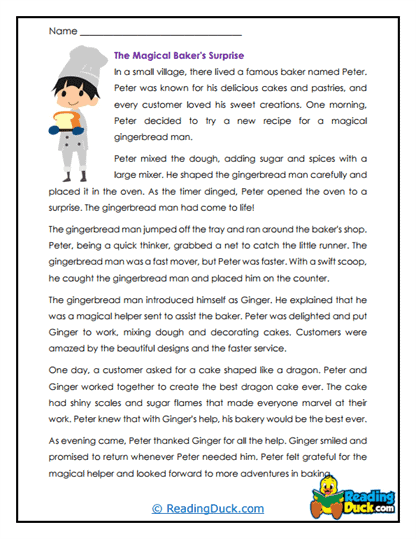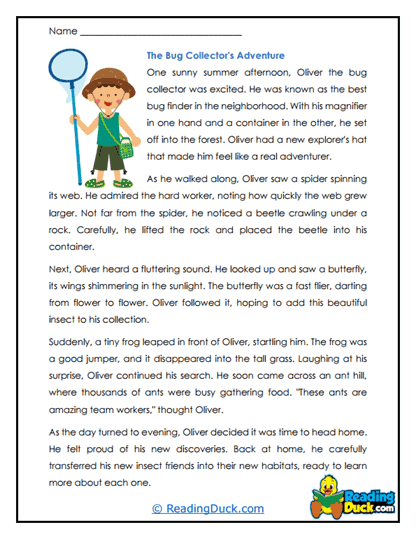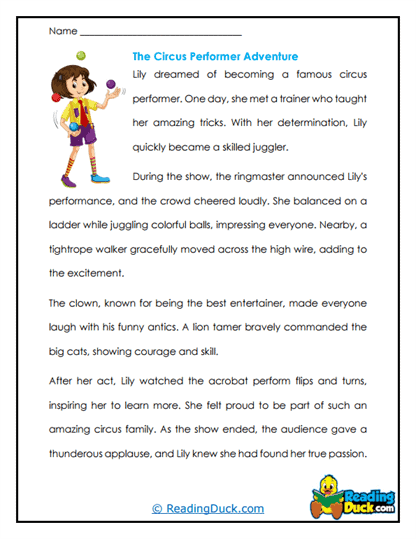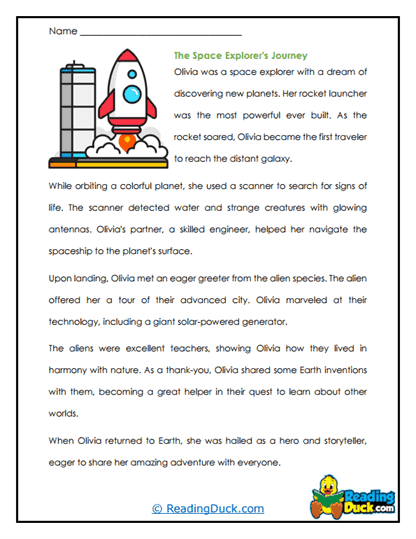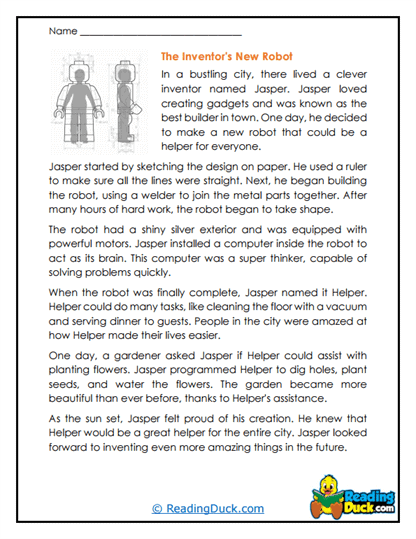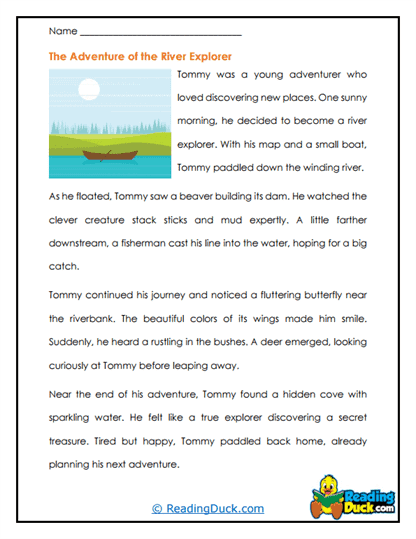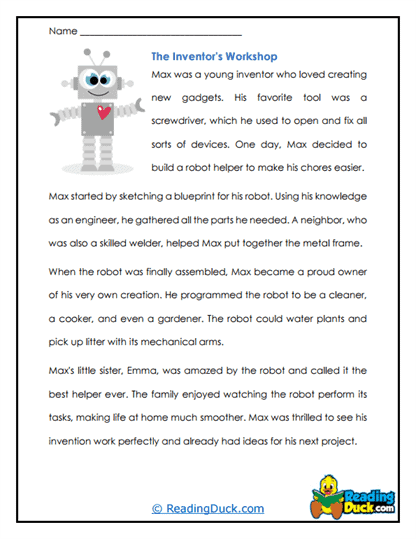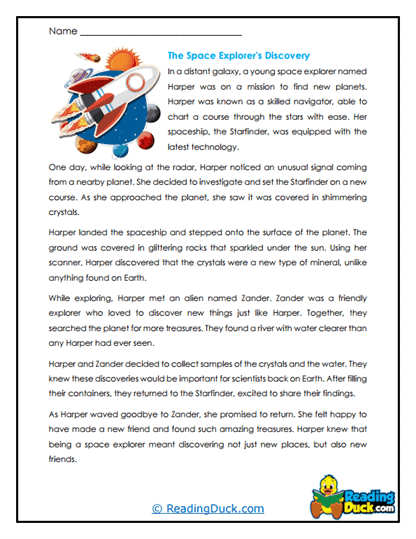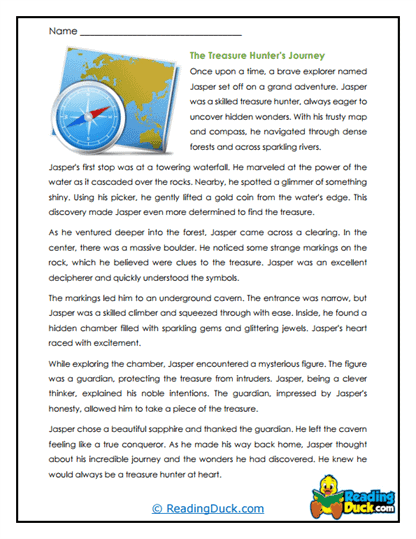-er Suffix Reading Passages Worksheets
About Our -er Suffix Reading Passages Worksheets
Our -er Suffix Reading Passages Worksheets provide a structured and engaging way for students to explore and understand words ending with the "-er" suffix. Each worksheet features a carefully crafted reading passage that focuses on vocabulary words using the "-er" suffix, accompanied by a vibrant picture that adds context to the text and engages students visually. The use of colorful images helps make the content more appealing, ensuring that students remain interested in the material while developing their language skills.
The worksheets are designed with multiple-choice questions that test students’ comprehension of the passage. These questions encourage students to think critically about the reading and how the "-er" suffix affects word meaning. To further support educators and parents, a downloadable answer key is provided with each worksheet, making it easy to assess student understanding and provide feedback. All worksheets are available in PDF format, which ensures they are easy to download, print, and use in both classroom and at-home settings.
Understanding the -er Suffix
The -er suffix is one of the most commonly used suffixes in the English language, often added to verbs to form nouns that indicate a person or thing that performs an action. For example, the word "teacher" comes from the verb "teach," and it refers to someone who performs the action of teaching. The "-er" suffix also plays a role in creating comparative adjectives, such as "bigger" or "faster," which compare two things or people.
Here are some examples of "-er" suffix words that may appear in the worksheets:
- Runner: Referring to a person who runs.
- Painter: A person who paints, whether as a profession or hobby.
- Farmer: Someone who works in agriculture, managing crops or livestock.
- Bigger: Used to compare the size of two objects or people, indicating that one is larger than the other.
By working through these reading passages, students will encounter a wide variety of "-er" words, helping them better understand how this suffix is used to describe people, professions, and comparisons. This exposure enhances their vocabulary and helps them recognize the suffix in future reading and writing activities.
Flexible for Classroom and Home Learning
The -er Suffix Reading Passages Worksheets are designed to be flexible and adaptable, making them suitable for both classroom instruction and home-based learning. Whether used as part of a structured lesson plan or for extra practice, these worksheets provide valuable opportunities for students to improve their comprehension and vocabulary skills.
- Classroom Use: Teachers can incorporate these worksheets into their language arts lessons, particularly when teaching about suffixes, word structure, or vocabulary development. The reading passages offer a way to practice reading fluency while focusing on words that end with "-er." Additionally, the multiple-choice questions serve as a quick and effective method for assessing comprehension, allowing teachers to check for understanding in real time.
- At-Home Learning: Parents and homeschooling educators can use these worksheets to supplement their children’s education. The clear structure and easy-to-follow format make it simple for students to complete the activities independently, while the answer key allows for quick feedback. The PDF format ensures that the worksheets are easy to download, print, and use, offering flexibility for families who need additional resources to reinforce language skills.
Whether used in the classroom or at home, the -er Suffix Reading Passages Worksheets offer a versatile resource that supports literacy and vocabulary development in various educational environments.
Integrating -er Suffix Worksheets into Lesson Plans
Educators will find that integrating the -er Suffix Reading Passages Worksheets into their lesson plans is straightforward and effective. These worksheets align with several educational goals, particularly those related to grammar, word formation, and reading comprehension. By focusing on the "-er" suffix, educators can provide students with valuable practice in understanding how this suffix changes the meaning of words.
- Vocabulary Development: The worksheets serve as an excellent tool for teaching and reinforcing vocabulary. By introducing students to various "-er" words in context, teachers can help them understand how suffixes change the meaning of root words and create new nouns or comparative adjectives. The reading passages provide a practical application of these concepts, allowing students to see how the suffix is used in everyday language.
- Reading Comprehension: Each reading passage is accompanied by multiple-choice questions that test students' ability to understand the text and the vocabulary within it. These questions encourage critical thinking and ensure that students not only recognize "-er" words but also understand their role in the sentence. This focus on comprehension supports broader literacy goals and helps students become more confident readers.
- Curriculum Alignment: The worksheets are easily aligned with language arts standards that focus on vocabulary acquisition, reading fluency, and grammar instruction. Teachers can use these worksheets as part of a unit on suffixes or word formation or incorporate them into lessons on reading comprehension and fluency. The versatility of the -er Suffix Reading Passages Worksheets allows educators to use them in a variety of ways, making them a valuable addition to any curriculum.
Ways to incorporate these worksheets into lesson plans include:
- Whole-Class Instruction: Use the worksheets to introduce the "-er" suffix to the entire class, working through the reading passage together and discussing how the suffix changes the meaning of the root words.
- Small Group Activities: Assign the worksheets to small groups or pairs of students, encouraging collaboration and discussion about the "-er" words in the passage. This promotes peer learning and helps students deepen their understanding through shared experiences.
- Independent Practice: For students who need extra practice, these worksheets can be used as independent activities, either during class or as homework. The multiple-choice format makes it easy for students to complete the worksheet on their own, while the answer key provides immediate feedback.
Strengthening Fluency with Repeated Exposure
One of the key advantages of the -er Suffix Reading Passages Worksheets is the repeated exposure they provide to words that end with the "-er" suffix. This repetition is essential for building fluency, as it helps students become more familiar with how the suffix is used in different contexts and allows them to apply this knowledge in their own reading and writing.
- Reinforcing Word Recognition: Through repeated encounters with "-er" words, students build a stronger understanding of how this suffix functions. Whether the word refers to a person, an occupation, or a comparison, students gain confidence in identifying and interpreting the meaning of these words as they read.
- Improving Reading Fluency: By practicing with reading passages that contain familiar suffixes, students improve their reading fluency. As they become more comfortable with "-er" words, they can read more quickly and accurately, which supports overall literacy development and prepares them for more complex texts.
- Expanding Vocabulary: Exposure to a wide range of "-er" words helps students expand their vocabulary and better understand how suffixes create new meanings. This enriched vocabulary strengthens their communication skills, enabling them to use more descriptive language in their speaking and writing.
Practical Tips for Educators
To maximize the impact of the -er Suffix Reading Passages Worksheets, educators can follow a few best practices to ensure students remain engaged and get the most out of each activity:
- Introduce the Suffix in Context: Before distributing the worksheets, provide students with a brief explanation of the "-er" suffix and its role in forming nouns and comparative adjectives. Offering clear examples will help students understand what to look for in the passage.
- Encourage Discussion: After students complete the worksheets, facilitate a discussion about the "-er" words they encountered. Ask students to come up with additional examples and explain how the suffix affects the meaning of the base words.
- Incorporate Writing Exercises: To further reinforce the concept, have students write their own sentences or short paragraphs using the "-er" words they learned in the passage. This helps them apply their knowledge in a practical way while also developing their writing skills.
- Use for Formative Assessment: These worksheets are an excellent tool for formative assessment. Review students’ answers to the multiple-choice questions to gauge their understanding of the suffix and its usage, providing targeted feedback where needed.
Conclusion
The -er Suffix Reading Passages Worksheets are a versatile and valuable resource for educators and students, offering targeted practice with words that end in the "-er" suffix. These worksheets provide a comprehensive approach to teaching vocabulary, reading comprehension, and grammar, with engaging reading passages, comprehension questions, and downloadable answer keys to support learning.
By offering repeated exposure to "-er" words in context, these worksheets help students build fluency, expand their vocabulary, and improve their overall reading skills. Whether used in the classroom or at home, the -er Suffix Reading Passages Worksheets offer a flexible and effective tool for reinforcing key language concepts and helping students become more confident readers and writers.
